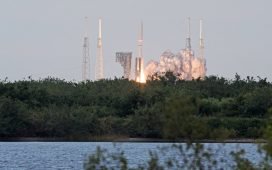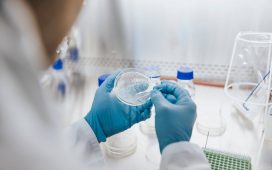In 2011 a shock celebrity break-up garnered headlines around the world – not the separation of Ashton Kutcher and Demi Moore, nor Jennifer Lopez and Marc Anthony, but the sudden, inexplicable rupture between Bibi and Poldi, two 115-year-old Galápagos tortoises at Happ reptile zoo in Austria.
After nearly a century as a couple, the female, Bibi, had had enough: one day, she bit a chunk off Poldi’s shell, drawing blood, and continued to attack him until zoo staff moved him to a separate enclosure.
In the wild, Galápagos tortoises are not monogamous, so it’s no small feat that Bibi and Poldi’s liaison lasted as long as it did, though their coupling never produced any offspring. Attempts at reconciliation were not successful. “We get the feeling they can’t stand the sight of each other any more,” the zoo’s director, Helga Happ, lamented at the time.
Why do breakups occur? Among humans it’s a question that has engendered ballads, provided rich fodder for novelists and continues to intrigue scientists.
To break up, of course, you have to be together in the first place. In social monogamy, animals live together and form strong ties known as pair bonds – though sexual faithfulness is a separate question. In mammals, humans are among the exceptions: social monogamy has been observed in less than 10% of mammal species.
That low figure comes down to the difference in parental investment between males and females, says Prof Simon Griffith, an evolutionary ecologist at Macquarie University. In most mammal species, parental care comes primarily from the female, who invests hugely in gestating and providing milk for her young.
“In many mammals, there’s no parental care by the dad,” Griffith says. “It may be that he’ll do a bit of guarding, or he’ll hold the territory, but … he can’t really provide that much for the offspring.
“In birds, it’s completely different. The dad can actually care almost as much as the female in terms of delivering food.
“That’s why birds tend to have partnerships and mammals don’t.”
Before methods to establish paternity existed, evidence suggested that birds as a group were mostly sexually monogamous, says Prof Raoul Mulder, an evolutionary ecologist at the University of Melbourne.
“If you look at whether or not a particular species pairs, and how long they pair for, and how long they stay together for, and you classify all the known birds, you’d arrive at a figure of over 90%,” Mulder says.
But after genetic testing techniques were developed, scientists began to realise that birds were not as faithful as previously believed – that social and sexual monogamy don’t necessarily go hand in hand. Mulder’s work on the superb fairywren found that 76% of chicks born in nests were fathered by other males. That astonishing rate of cuckoldry is bested only by the Australian magpie at a rate as high as 82%.
On the whole, however, Australian birds tend to divorce less than European species, Griffith says, as strong partnerships are required to survive fickle environmental conditions. In the northern hemisphere, the timing of breeding seasons is predictable, tied to day length, but in Australia the decision to breed also depends on climatic factors.
“Some years, you literally don’t get any rain that’s meaningful and nothing grows, and the birds and animals that live there can’t breed,” Griffith says of Australia’s arid zone. “[Breeding] is a much more complicated decision at an individual level but, if you’re in a good partnership, you can together optimise that decision.”
Among birds, the poster child for monogamy is the wandering albatross, which can live up to 50 years and usually mates for life. “This bird takes such a long time to establish a pair bond,” says Dr Ruijiao Sun, a postdoctoral researcher at the University of California, Santa Barbara. “If an individual loses their partner, it takes years to bond with a new one to be able to start breeding again.
“Wandering albatrosses only have one egg at each breeding season but there always needs to be one parent sitting on the nest to protect their chick and do the incubating but they also need to forage … so they have to take turns.
“It really takes two to be able to raise their chicks.”
Sun suggests long-lived species such as the wandering albatross benefit more from strong pair bonds. “Each time they breed, they fine-tune their behaviours – they coordinate with each other much better, making reproduction effortless [over time].”
Short-lived species, in contrast, might be more ready to ditch their partner to maximise breeding opportunities. Even so, Sun’s research estimates that the divorce rate in wandering albatrosses is about 10%. (Compare this to the king penguin, which, though sexually monogamous while with a partner, divorces at a rate of about 80%.)
Other factors that might drive animals to divorce – what scientists call mate switching – include a high mortality rate and a skewed sex ratio. Both drive up competition for mates, creating temptation for those of the minority sex to shack up with someone more appealing.
Research is also emerging that the climate crisis may also play a role in divorce. In a study of snow petrels, which nest in rock crevices in Antarctica, Sun and her co-authors found that the number of snow days in a breeding season was directly linked to the rate of break-ups. Too much snow fills nests and freezes the eggs, leading to incubation failure.
“They may either abandon their previous nest or abandon their partner,” Sun says, adding that the stress of constant snow-shovelling might make birds “blame their partner more than they normally would do”.
The work projected that declining sea ice under climate change would also affect survival rates in future, skewing the sex ratio. “We will have a lot of males in a population, and fewer females available to mate with them,” Sun says.
Stress and spousal blame probably also play a role in the Falkland Islands, where unusually warm water temperatures have been linked to higher divorce rates in black-browed albatrosses. “Environmentally driven divorce,” the researchers suggested at the time, “may therefore represent an overlooked consequence of global change.”









